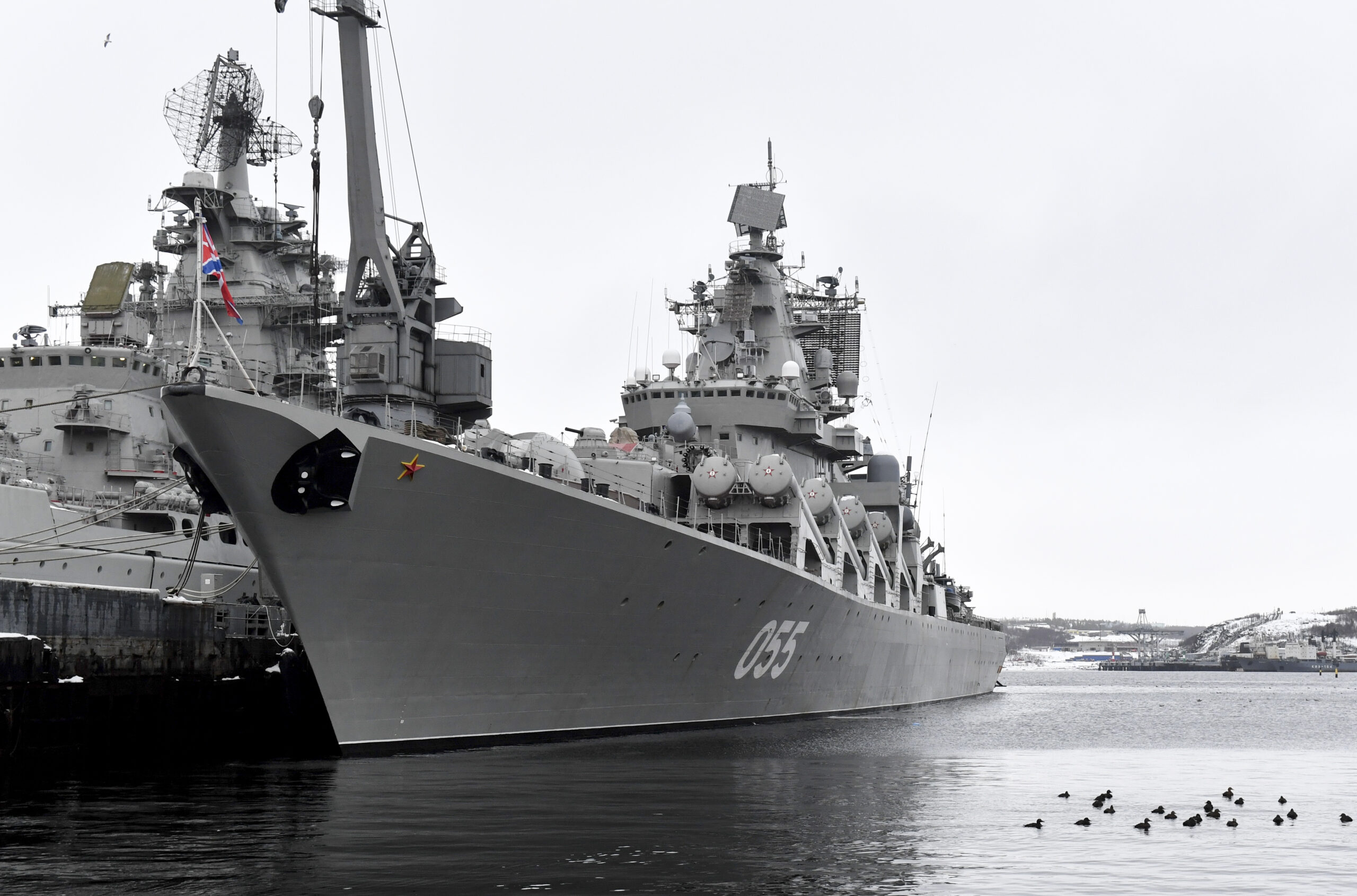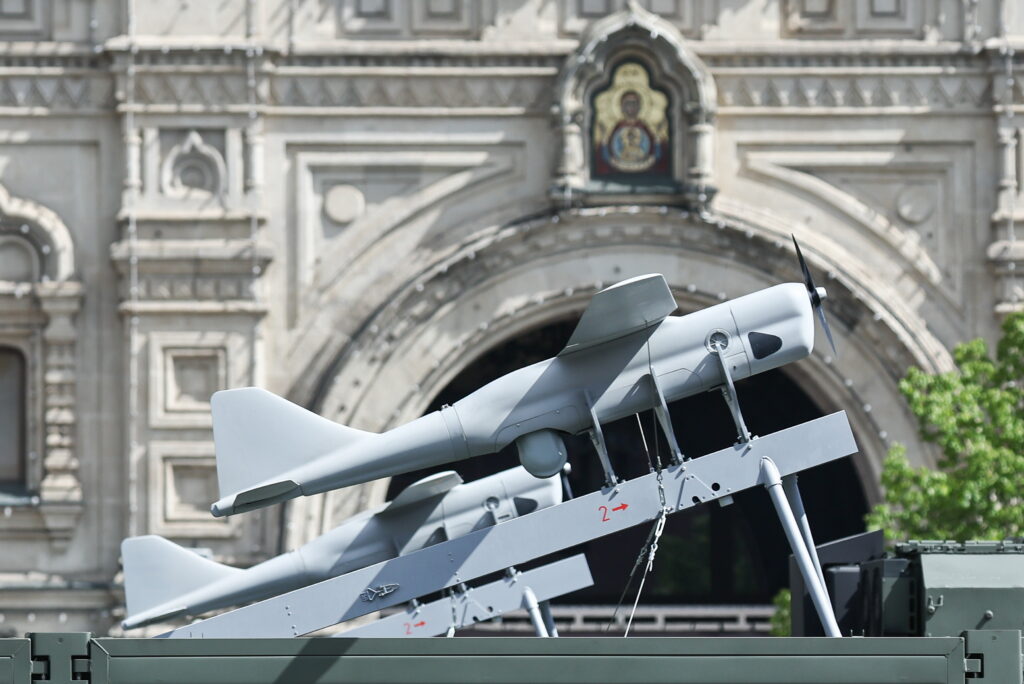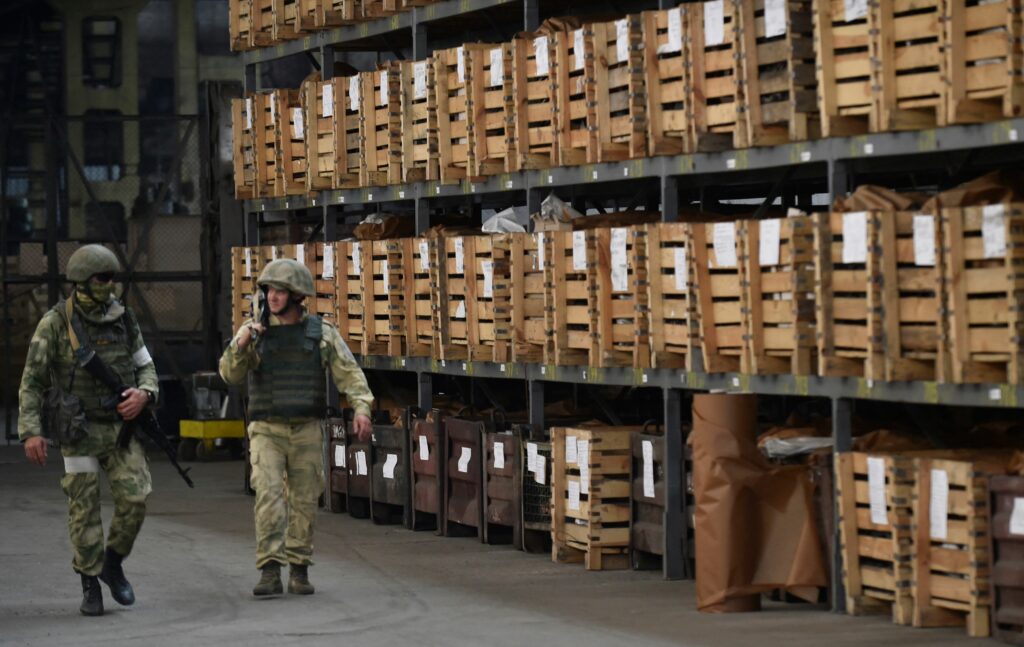With the ongoing war in Ukraine, the long-term strategic prospects of the Russian Navy are often eclipsed by other issues. Yet these have also clearly taken a major hit during the conflict and are worth revisiting. In the Baltic, Finland finally joined NATO on April 4, 2023; this accession, as well as the looming accession of Sweden, have rendered anachronistic the updated Russian naval doctrine from the summer of 2022, at least as far as the Baltic and Northern Fleets are concerned. If we keep in mind that the prologue and pretext for the Russian full-scale invasion in Ukraine was in many ways the December 2021 ultimatum — which called on NATO, among other things, to abandon plans for further expansion — it becomes clear how Moscow is much further from its foreign policy goals now than it was before February 24, 2022.
Facing these unfavourable currents is a command vertical in flux. This April, the command of the Pacific Fleet (TOF) was replaced, which brought a change of command of the Baltic Fleet too. Admiral Sergei Avakyants was sacked on the last day of a surprise inspection of the readiness of the Pacific Fleet; his place was taken by Admiral Viktor Liina, who until then had commanded the Russian Navy in the Baltic for only a year and a half. Liina’s place at the hem of the Baltic Fleet was, in turn, taken by Vice Admiral Vladimir Vorobyov, who had previously been deputy chief of the general staff for a year and a half. In sync with this rotation, the Navy announced a plan to re-subordinate the Navy to the Commander-in-Chief instead of subordinating it to the commanders of relevant military districts. This essentially signals a return to the Soviet system of command. At the same time, Russia seems to be abandoning its plans to upgrade and rearm the nuclear-powered cruiser Peter the Great, which will be decommissioned and retired after the prospected return to service of the Admiral Nakhimov ship of the same type in 2024.
In the background of the ongoing land war the Russian naval forces can no longer operate in the paradigm of recent decades, when the Kremlin sought to develop a scaled-down and optimized copy of the Soviet fleet. At the same time, the actions of the Russian government with the Navy clearly demonstrates overstretched capacities. It follows that the Kremlin’s current approach to the war against Ukraine, which also involves an obvious overstretching of land forces, is not an aberration; it is a consistent and systemic political course, which cannot be corrected or altered by a conscious decision to withdraw from the war. It can only be changed after a transformation of the political system and a serious rotation of the political and military elite.
Finland’s military capabilities
Despite Finland’s population being virtually the same size as that of St. Petersburg, it has one of the most combat-ready armies on the European continent. Its military manning system is designed to deploy up to 280,000 men in wartime to defend they country (until 2017 this figure was about 230,000). Such a number is comparable, for example, with the number of Russian ground troops on the eve of the invasion in Ukraine.
In addition, in December 2021, Finland announced the rearmament of its air force: by 2026−2030 it is scheduled to have received 64 F-35A fighters, although it is possible that they may arrive in the country even earlier. Taking into account that the combat radius of these aircrafts is about 1,000 km, all bases of the Baltic and Northern Fleets, including the shipyards in Severodvinsk, where nuclear submarines are built and repaired along with other warships, would theoretically be within their reach.
The completion of Finland’s NATO accession and the forthcoming accession of Sweden has given an additional impetus to regional defense integration. In mid-March 2023, Denmark, Norway, Finland and Sweden signed a declaration for a regional air force numbering between 200 and 250 multirole combat aircraft (F-16, F/A-18, F-35 and SaabJAS 39). Russia has many more fighters, attack and frontline bombers, but only 300 of the most advanced of them (Su-30SM and Su-35 fighters and Su-34 fighter-bombers.) Thus, the combined Air Force potential of the Scandinavian countries is quite comparable to that of Russia. Moreover, taking into account the ongoing increase in the fleet of F-35 fighters in these countries, the quality of this joint capability will be by far superior to that of Russia in the current decade.
This assumption is true if we generally take out of the equation the issue of training pilots themselves, which the Russian side struggles with. For example, Russian military pilots reach the level of competence that enables them to carry out combat missions only by the age of 27−28, and 80% of them leave for health reasons when they are 32−35. Besides, the typical annual flight time of a Russian army pilot is formally 80−100 hours, though in practice one hour of training and combat training in the RF Armed Forces equals 50 minutes, so the actual flight time is probably less than the formal one. This allows him or her only to maintain the skills to fly the aircraft or helicopter and perform standard tasks.
The actual comparison between the fleets themselves can actually be omitted. In the Baltic Sea, Russian warships and the single diesel-electric submarine are actually locked up at bases in Baltiysk and Kronstadt. Moreover, since 2014, there have been reports of incidents that testify to Moscow’s deliberate course of escalation in its confrontation with the West in this region as well. However, with limited production capabilities, the fleet was completed with small rocket ships, cutters, and landing boats. Its ground component (the 11th Army Corps), aviation and air defense were also expanded, boosted and strengthened. However, these efforts made sense only on the condition that Finland and Sweden remain outside NATO: ⸺ the only way the Kremlin could expect to have room for maneuver in the region in case of escalation. With Finland’s accession to the Alliance (and even with Sweden’s delayed final accession), there is no more room left for maneuvering.
The Northern Fleet, with its strategic and multi-purpose nuclear-powered submarines and surface forces in the Barents and White Seas, is now limited in its ability to reach the Atlantic. At the same time, there is a need to boost its aviation and air defense components, and certainly, its ground component. Simply put, if nothing is changed, a so-called «no-access zone» (A2/AD zone) should be created on the Kola Peninsula, similar to the one declared in Kaliningrad Oblast. This question became particularly pressing in connection with the urgent relocation of strategic aviation from the Engels airbase to the Olenegorsk airbase in the fall of 2022.
It also becomes necessary to expand the Northern Fleet infrastructure to the east of the Kola Peninsula, along the Northern Sea Route — further away from the aircraft of new NATO members. However, this potential eastern displacement raises a much more difficult question: Why does Russia need this fleet in its present form at all, a fleet which will have to be constantly busy saving itself in the Arctic ice?
Fleet on land and Russia stretching itself thin
Given the situation, the most rational step would be at least a serious reduction of the Northern Fleet’s forces and abandonment of the very idea of the Baltic Fleet. In the latter case one more historical aspect should be taken into account: since the beginning of the 18th century this fleet (as well as the Black Sea fleet) has been meant to bolster the expansion and to support the land forces advancing in the western direction. Surprisingly, it is slightly inferior to the Black Sea Fleet in the number of large landing ships, especially before the loss of the large landing ship Saratov in the port of Berdyansk in March 2022, yet superior to it in the number of small landing ships and boats.
In recent history, Russia has operated from the premise that it needs fleets not only and even less for defense, but for launching an offensive ⸺in order to flex muscles and project strength. Point 26 of the Russian military doctrine adopted on December 25, 2014, also testifies to this: «The Russian Federation provides for the use of high-precision weapons as part of its strategic deterrence measures of a forceful nature.» The Baltic region has been planned as the main theater of action for the Baltic Fleet in recent years, despite the participation of some ships in operations against Somali pirates, in the Syrian campaign, and in the war against Ukraine; that implies the Northern Fleet is assigned a global role beyond nuclear deterrence. Maintaining its global role and forming an extensive «no-go zone» along the new NATO border in the Arcti is daunting and costly. Russia’s likely abandonment of the nuclear-powered cruiser Peter the Great supports this thesis. This does not mean, however, that Moscow has given up the idea of building new nuclear-powered missile ships.
It is clear that in today’s domestic political reality, the Kremlin cannot give up its objectively redundant naval forces. Instead it plans to upgrade and rearm them rather than coast guard forces. Nor can it redistribute serviceable ships and submarines to the Pacific, where they could still gain sought-after foreign policy leverage attributed to the Navy at the doctrinal level. In other words, instead of critically rethinking its long-term approach to the development of its naval forces, the Kremlin prefers the path of obvious overstretch and overstrain for the sake of not changing.
This is also designed to maintain the degree of confrontation with the West regardless of how the war against Ukraine goes. Simply put, the seemingly minor issue of the Russian Navy and NATO enlargement shows that the policy of stretching oneself thin and going into an overstrained modus operandi is not a product of specific political circumstances or decisions of individuals, but a systemic phenomenon. It fully reflects the state of Russia’s current political system as a whole. And if the current Russian government proves capable of preserving itself, it will also preserve this course with the consolidation of emergency management practices.
In fact, the preservation of the current course means three possible scenarios. First scenario: a gradual, though accelerated organizational and technical degradation of the Navy, with the current political system in Russia maintaining its grip on power but with limited resources at its disposal. Any attempt to counter this degradation, like similar actions in other spheres, would require more and more effort. Second scenario: an attempt to use the Russian fleets, while they preserve at least some military capacity, for an open clash with NATO or their allies, given that these forces are less affected by the military actions. The third scenario, which is possible only after the transformation of the Russian political system: abandoning the course of overstretched resources and energies in favor of an earnest and manageable reduction of the Navy.










